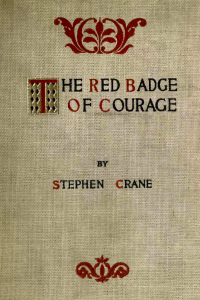I Learn about Stream of Consciousness
I distinctly remember, in a high school literature class, reading Stephen Crane’s Red Badge of Courage. As I read, this thought came to me:
Oh. So an author can actually write passages of the character’s thoughts.
Keep in mind that as a student, I had absolutely no guidance or teaching regarding writing fiction. I was pretty much clueless; which made this moment even more memorable.
Many years later, I learned that this writing method (technique) is known by several names:
- Stream of consciousness
- Inner (interior, internal) dialogue
- Inner (interior, internal) monologue
Used in literature, the term means:
…a narrative mode that seeks to portray an individual’s point of view by giving the written equivalent of the character’s thought processes, either in a loose interior monologue, or in connection to his or her actions.
Professor of English and Film Studies, Bruce Kawin, defines it thus:
…the attempt, in fiction, to imitate the complete mental life as it manifests itself in the ongoing present.
The Term Originally Stemmed from Psychology
 The term stream of consciousness stemmed from the written work of a psychologist by the name of William James back in the 1890s. Writers wasted no time in picking up on this phenomenon. In the early 1900s, great numbers of fiction authors began to explore the minds of their characters in new and more inventive ways.
The term stream of consciousness stemmed from the written work of a psychologist by the name of William James back in the 1890s. Writers wasted no time in picking up on this phenomenon. In the early 1900s, great numbers of fiction authors began to explore the minds of their characters in new and more inventive ways.
The practice became universal to the extent that beginning writers felt they had not truly arrived if they had not mastered the technique of writing stream of consciousness.
Stepping away from phrases such as, “he thought,” “he was reminded,” “he vowed silently,” the author enjoyed a new sense of freedom. The door was open to allow the reader entrance into the thoughts and impressions of the character.
However, as human nature is prone to do, the revolutionary idea quickly ran to excess.
Confusion in the Use of Stream of Consciousness
The result was – in some cases, not all – a mishmash of phrases, fragments, half thoughts, sensations, images, intuitions, all flowing together. Sometimes with absence of logic; sometimes with no respect for the reader by running on for endless pages. (Readers were more patient in that era.) Sometimes the technique proved effective; sometimes not. Sometimes it created only confusion.
Controversy arose over whether the unconscious use capitals and connectives? Does the unconscious of an uneducated person use poor spelling and grammar? Should words run together? Confusion reigned.
The excess meant that writers inadvertently (or ignorantly) slipped into author intrusion, forgetting that the monologue must be controlled by the author, and not left to unchecked free rein.
 Readers Lose Patience
Readers Lose Patience
By the post-WWII days, readers became much less patient. Technology was speeding up, television came on the scene, and novel structure changed as well. The use of stream of consciousness was forced to change with the times.

March, 2014
Norma Jean Lutz Classic Collection
This collection includes six re-released titles
of my previously-published teen novels
Exciting Project! Click for Details!
You can be a vital part of this ambitious project.
Personalized gifts for supporters!
Come on board and together we can get these books into the hands of teens everywhere! 
